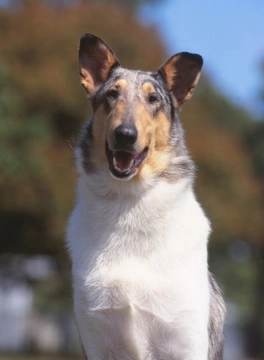
British Dog Breeds - Worthy Of A Second Glance
British dog breeds are an integral part of British life. Not only do they say much about us as a nation but they also document a large part of our social history. Many breeds were specifically bred to carry out particular tasks as the bond between dog and man became more and more sophisticated. But life changes and so do our needs. And this has an impact on all kinds of things - not least our native dogs. In some cases, like that of the Rough Coated Otterhound, there is a significant decline in kennel club registrations - a meagre 38 last year. Worryingly they are not the only breed to undergo such a drastic change of fate. Many special breeds have all but disappeared from the landscape as their popularity dwindles or their usefulness becomes less relevant. And yet when polled we still consider ourselves to be a nation of dog lovers. Indeed further figures, taken from the pet food manufacture's association, show that in 2012 the U.K. dog population is around 8 million. That equates to 23% of households owning at least one dog.
Why then we may ask are such dogs as the great English Setter being placed on the endangered species list by the U.K. Kennel Club?
The answer is fairly simple - it would seem that these days we are into the celebrity culture in more ways than one and certain dogs would appear to be on the celebrity list whilst others, quite simply, are not. The Chihuahua is a typical example of the celebrity dog, with a 25% increase in registrations last year alone. And whilst the Chihuahua is a fine dog, as are all dogs, it would be a terrible thing if we were to lose some of our nation's best examples of British life, in favour of what is essentially a lap dog. Lap dogs have their place, an important one too, but it is a reflection of an altogether different lifestyle - that of the elderly and that of the apartment dweller.
So let's take a second glance at what some of our own breeds have to offer
THE ENGLISH SETTER:
Described as sensitive, affectionate and loyal this dog is also good with children. It is a medium sized dog of great grace and elegance. It has a distinctive flecked coat that in the adult dog grows longer on the tail, forelegs, hind legs and chest. This is called feathering. When the dog is well groomed this feathering appears to float and ripple as they walk. Originally bred for hunting upland game its history goes back some 200 years and more. It is best suited to a family that is willing and able to provide regular walks of some reasonable length.
DANDIE DINMONT TERRIER:
An unusual little dog that has origins in the Scottish Border Country; theDandie Dinmonet Terrierwas originally bred for hunting otters and badgers. However today it makes a great family pet for those with older children. In general it is ascribed as having a happy and easy going temperament, being the most docile of the terrier breeds. At the same time though it will make a great guard dog as it has no problem challenging other dogs or even foxes. Its colouring is described as mustard and can range from anything between reddish brown to a lighter fawn colour. It is a small dog with short legs and somewhat pendulous ears and would typically weigh in at about 18 -24 lbs or 8 -11 kg. Height achieved is around 8 -11 inches or 20 -28 cm. This dog first found fame when it was immortalised in Walter Scott's novel 'Guy Mannering'.
THE SMOOTH COLLIE:
Commonly known as a sheep dog this canine has its roots as far back as roman times when it is thought to have been introduced by the Romans to our lands, with the specific intent of herding sheep. It is quick and light upon its feet and has exceptional intelligence which makes it an ideal pet as it is very easily trained. They make good companions and are often used as assistance dogs for the disabled and also make good guard dogs. Slightly longer than its own tail it has a sweet expression and semi erect ears that give a quizzical look. Weight is about 45lb for females (20kg) and 75 lb for males (34kg). In adulthood they can reach a height of22 - 26 inches depending on whether it is a dog or a bitch. All in all an excellent family pet with great looks.
GLEN OF IMAAL TERRIER:
Originally from Ireland, theGlen of Imaal Terrierhas a fascinating history. In the first instance the Hessian and French Mercenaries that came over Ireland at the behest of Elizabeth the 1st bred their dogs with the local population's dogs and so the Imaal terrier was born. It is also sometimes known as the Wicklow terrier. Used mainly for herding purposes it has another story attached to it - being known as a 'turnspit dog' - to turn meat at the hearth. These days it has a better and more comfortable place at the hearth and rather than having to work to earn its keep may simply lie there look good! But it is superbly loyal and highly intelligent which makes it a great pet for all. It makes a great guard dog. The Glen of Imaal is in the dwarf category breed yet lacks nothing in the way of looks - sweet and bright with appealing eyes, it weighs in at about 36lbs and stands approximately at 14inches when fully grown.
Amazingly all of these dogs are on the endangered species list and even more amazingly they are not alone on that list. Next time you think of getting a dog please don't overlook the great British Breeds.



